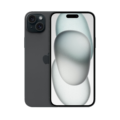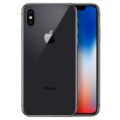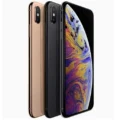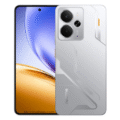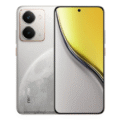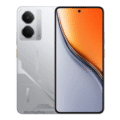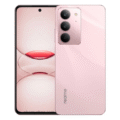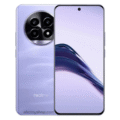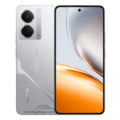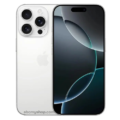- Home
- All Products
- Mobiles
- Apple iPhone 16 Pro
Apple iPhone 16 Pro
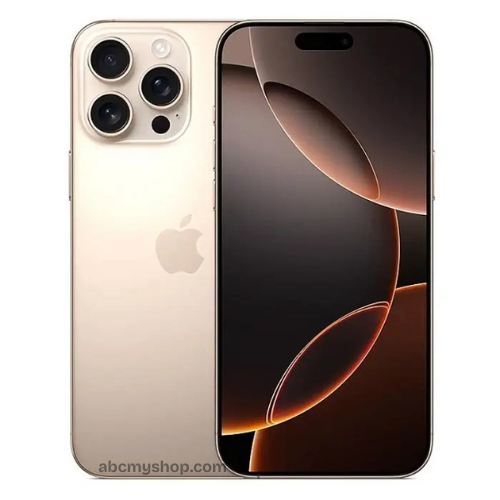

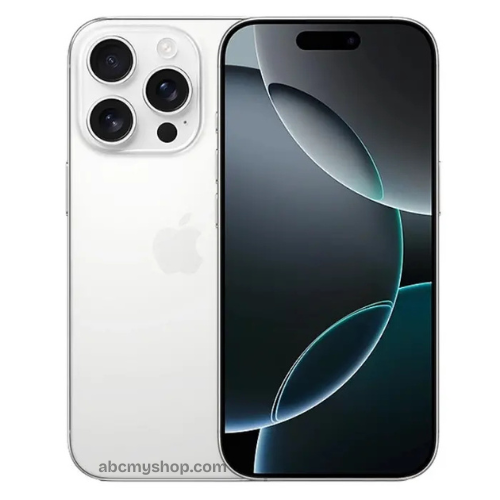
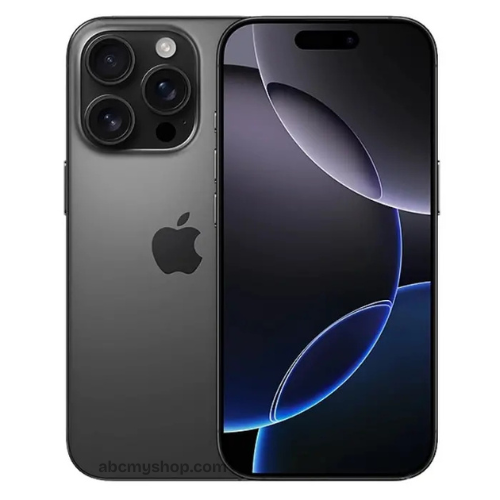
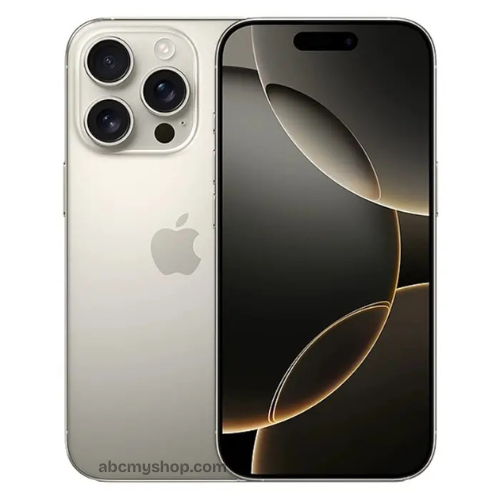
-
CPU: Hexa-core (2x4.04 GHz + 4x2.X GHz)
-
RAM: 8GB RAM Apple A18 Pro
-
Display: 6.3" 1206x2622 pixels
-
Camera: 48MP 2160p
-
OS: iOS 18
-
Battery: 3582 mAh PD2.0 25W
Apple iPhone 16 Pro Price in Bangladesh 29th August 2025
The Apple iPhone 16 Pro is available in four storage options: 128GB, 256GB, 512GB, and 1TB, all with 8GB of RAM. In Bangladesh, the price of the iPhone 16 Pro is 189,999 Taka. It features a 3582mAh battery that supports fast charging. The device operates on iOS 18 and is powered by the Apple A18 Pro chipset, built on a 3nm process for improved performance.
অ্যাপল আইফোন ১৬ প্রো চারটি স্টোরেজ অপশনে উপলব্ধ: ১২৮GB, ২৫৬GB, ৫১২GB, এবং ১TB, সবগুলোতে রয়েছে ৮GB RAM। বাংলাদেশে, আইফোন ১৬ প্রো-এর দাম ১৮৯,৯৯৯ টাকা। এতে ৩৫৮২mAh ব্যাটারি রয়েছে যা ফাস্ট চার্জিং সাপোর্ট করে। এই ডিভাইসটি iOS ১৮ এ চলবে এবং এতে রয়েছে অ্যাপল A18 প্রো চিপসেট, যা ৩nm প্রক্রিয়ায় তৈরি, যা উন্নত পারফরম্যান্স নিশ্চিত করে।
Apple iPhone 16 Pro highlight
The Apple iPhone 16 Pro is set to be launched in September 2024, with model numbers A3293, A3083, A3292, A3294, and iPhone17,1. Its dimensions are 149.6 x 71.5 x 8.3 mm, and it weighs 199 grams. The device features a 6.3-inch LTPO Super Retina XDR OLED display with a resolution of 1206 x 2622 pixels, protected by scratch-resistant ceramic glass with an oleophobic coating. It runs on iOS 18 and is powered by the Apple A18 Pro chipset (3 nm), with a Hexa-core CPU (2×4.04 GHz + 4×2.X GHz) for optimal performance.
The iPhone 16 Pro is equipped with a quad-camera setup on the rear, including a 48MP wide lens, a 12MP periscope telephoto lens, a 48MP ultrawide lens, and a TOF 3D depth camera. On the front, it has a 12MP SL 3D selfie camera housed in the display notch. The device supports advanced video recording capabilities, including 4K at 24/25/30/60/100/120fps, 1080p at 25/30/60/120/240fps, 10-bit HDR, Dolby Vision HDR (up to 60fps), ProRes, 3D spatial video/audio, and stereo sound recording.
In terms of storage, the iPhone 16 Pro is available in four variants: 128GB/8GB, 256GB/8GB, 512GB/8GB, and 1TB/8GB. Additionally, it supports microSDXC expansion through a dedicated slot. The device is powered by a 3582mAh battery with fast charging capabilities and comes with dual nano-SIM card slots, supporting 2G, 3G, 4G, and 5G networks.
Other notable features include WLAN, Bluetooth, and a USB port for connectivity.
Your question and our opinion about the iPhone 16 Pro
- When will it be released?
The iPhone 16 Pro will be launched in September 2024. - What is the price of the Apple iPhone 16 Pro?
The price of the iPhone 16 Pro is BDT 1,89,999. - How much RAM and storage does it have?
The iPhone 16 Pro comes with 8GB of RAM and offers four storage variants: 128GB, 256GB, 512GB, and 1TB. You can choose from four options: 128GB/8GB, 256GB/8GB, 512GB/8GB, and 1TB/8GB. - What type of display is used?
The device features a 6.3-inch LTPO Super Retina XDR OLED display with a resolution of 1206 x 2622 pixels. - What are the processor and chipset like?
The iPhone 16 Pro is powered by the Apple A18 Pro chipset (3 nm), ensuring powerful performance. - What are the camera and video recording capabilities?
It has a quad-camera setup on the back: 48MP wide, 12MP periscope telephoto, 48MP ultrawide, and TOF 3D depth camera. The front features a 12MP SL 3D selfie camera. The video recording capabilities include 4K at 24/25/30/60/100/120fps, 1080p at 25/30/60/120/240fps, 10-bit HDR, Dolby Vision HDR (up to 60fps), ProRes, 3D (spatial) video/audio, and stereo sound recording. - Does it support 5G?
Yes, the iPhone 16 Pro supports 5G, as well as 2G, 3G, and 4G networks. - What is the battery capacity?
It is equipped with a 3582mAh Li-ion battery that supports fast charging. - What sensors are included in the iPhone 16 Pro?
The phone includes Face ID, an accelerometer, gyro, proximity sensor, compass, and barometer. - Which company and country manufacture the iPhone 16 Pro?
Apple manufactures the iPhone 16 Pro, and it is made in the United States.
Specifications
General
| Device Type | Smartphone |
| Model | Apple iPhone 16 Pro |
| Announced | 09 September, 2024 |
| Released | 20 September, 2024 |
| Status | Available |
| Price | 189999.00 |
Design
| Type Design Type called form factor refers to a mobile phone's size, shape, and style as well as the layout and position of major components of phone. There are three major form factors seen in mobile phones => bar phones, folding phones and sliding phones. | Bar |
| Dimensions | 149.6 x 71.5 x 8.3 mm (5.89 x 2.81 x 0.33 in) |
| Weight | 199 g |
| Colors | Black Titanium, White Titanium, Natural Titanium, Desert Titanium |
Network
| 2G Network | YES |
| 3G Network | YES |
| 4G Network | YES |
| 5G Network | YES |
| SIM SIM (Subscriber Identity Module) is a small card that contains mobile network subscriber's account information. This allows the phone using the card to attach to a mobile network. The SIM card is most commonly associated with GSM and UMTS mobile networks. Moving a SIM card from one phone to another allows a subscriber to switch mobile phones without having to contact their mobile network carrier. SIM cards can also be used by a phone to store limited amounts of data, such as phone numbers and text messages. | Nano SIM |
| Dual SIM | Nano-SIM and eSIM - International |
Display
| Display Type Display Technology => A number of display technologies and types used in mobile phones => TFT (Thin Film Transistor), IPS (In-Place Switching), OLED (Organic Light Emitting Diode), AMOLED (Active-Matrix Organic Light-Emitting Diode), Super AMOLED (an even advanced version of AMOLED), Resistive Touchscreen (Resistive touchscreens contain two layer of conductive material with a very small gap between them which acts as a resistance), Capacitive Touchsceen (Capacitive touchscreen technology consists of a layer of glass coated with a transparent conductor) | LTPO Super Retina XDR OLED |
| Size | 6.3 inches (97.2 cm2) |
| Resolution | 1206 x 2622 pixels |
| Pixel Density Pixel Density (PPI) is refers to the concentration of pixels on a particular display, measured in pixels per inch (ppi). Pixel density is calculated by dividing the diagonal pixel resolution of a display by its diagonal size, higher pixel density better display quality. | 458 ppi density |
| Touch Screen | Capacitive Touchscreen, Multi-touch |
| Display Protection Display Protection => Gorilla Glass is a special alkali-aluminosilicate glass shield with exceptional damage resistance that helps protect mobile displays from scratches, drops, and bumps of everyday use, It is always better to go for a smartphone with Gorilla Glass for that added protection and peace of mind. | Ceramic Shield glass (2024 gen) |
| Features | Always-On display |
Media
| Audio Playback | Yes |
| Video Playback | Yes |
| Video Out | Yes |
| FM Radio | No |
| Ring Tones | Yes |
| Loudspeaker | with stereo speakers |
Camera
| Primary Camera is able to capture photographs and usually videos, The most important characteristics of a camera are the resolution (measured in megapixels), lens focus type (fixed or automatic), higher megapixel cameras are known to capture higher quality photos, but not always a good measurement of the photos quality. | 48MP 2160p |
| Image | 8000 x 6000 Pixels |
| Video | 4K@24/25/30/60fps, 1080p@25/30/60/120fps, gyro-EIS |
| Camera Features | Apple ProRAW, Auto Flash, Face detection, Touch to focus, Slo-motion, Video HDR, Night Time-Lapse, Macro Video, Action Mode, ProRes Video, Audio Zoom, Stereo recording |
| Flash Flash Light => There is commonly two types of flash lights are used in camera mobile phones, LED Flash (LED flash offers lower power consumption with drive circuitry that takes up very little room, LEDs can be strobed faster than any other light source), Xenon Flash (xenon flash produces an extremely intense full-spectrum white light for a very short duration) | Dual-color LED Flash |
Software
| Operating System OS => Every computer system run on a base software called Operating System (OS). Operating System controls all basic operations of the computer (such as smartphone, PDAs, tablet computers and other handheld devices). The Operating System allows the user to install and run third party applications (apps), apps are used to add new functionality to the device. | iOS |
| Facebook Facebook is a popular free social networking website that allows registered users to create profiles, upload photos and video, send messages and keep in touch with friends, family and colleagues. The site is available in 37 different languages. | |
| Youtube Youtube is a popular free video-sharing website, Youtube is the largest video sharing site in the world, Millions of users around the world have created accounts on the site that allow them to upload videos that anyone can watch. |
Hardware
| Chipset Chipset is a group of integrated circuits designed to perform one or a more dedicated functions, often with real time computing constraints, Popular smartphones are equipped with more advanced embedded chipsets that can do many different tasks depending on their programming. | Apple A18 Pro (3 nm) |
| CPU CPU (Central Processing Unit) mostly known as processors, CPU processes instructions in order to carry out certain functions that make your device operate properly. Processors are often described as the brain of computers, smartphones and tablets, Smartphones and tablets rely on processors to carry out their every task, Processors are an incredibly important factor in selecting any type of computing device, including your smartphone. | Hexa-core (2x4.04 GHz + 4x2.X GHz) |
| GPU GPU (Graphics Processing Unit) is a single-chip processor designed to rapidly manipulate and alter memory to accelerate the creation of images in a frame buffer intended for output to a display, This includes things such as lighting effects, object transformations, and 3D motion. | Apple GPU (6-core graphics) |
| RAM (Memory) RAM (Random Access Memory) is a type of computer memory that can be accessed randomly, any byte of memory can be accessed without touching the preceding bytes that allows information to be stored and accessed quickly from random locations. RAM is the most common type of memory found in computer systems, smartphones, tablets and other electronic devices. | 8 GB |
| Internal Storage Internal Storage is a data storage space (flash memory) mostly used in smartphones, tablets and other electronic devices where operating system, apps, music, photos, videos, files and other user data Is stored. | 128GB/512GB/1TB storage |
| Card Slot Memory Card Slot is a special slot for inserting a memory card. Memory cards allow you to expand the phone's built-in memory, A memory card (sometimes called a flash memory card or a storage card) is a small storage medium used to store data such as text, pictures, audio, and video, for use on small, portable or remote computing devices such as mobile phones, mp3 players, digital cameras. | No |
| Sensors Sensors are electronic components that detects and responds to some type of input from the physical environment. The specific input could be light, heat, motion, moisture, pressure and location, The output is generally a signal that is converted to use in computing systems, a location sensor, such as a GPS receiver is able to detect current location of your electronic device. |
Face ID, accelerometer, gyro, proximity, compass, barometer Ultra Wideband (UWB) support (gen2 chip) Emergency SOS, Messages and Find My via satellite |
Connectivity
| Bluetooth Bluetooth is a wireless communications technology for exchanging data between mobile phones, headsets, computers and other network devices over short distances without wires, Bluetooth technology was primarily designed to support simple wireless networking of personal consumer devices. | 5.3, A2DP, LE |
| Infrared Infrared connectivity is an old wireless technology used to connect two electronic devices. It uses a beam of infrared light to transmit information and so requires direct line of sight and operates only at close range. | |
| Wi-fi Wi-Fi is a popular wireless networking technology using radio waves to provide high-speed network connections that allows devices to communicate without cords or cables, Wi-Fi is increasingly becoming the preferred mode of internet connectivity all over the world. | Yes |
| Wi-fi Hotspot | |
| USB | Type-C 3.2 Gen 2, DisplayPort |
| GPS GPS The Global Positioning System is a satellite-based radio navigation system, GPS permits users to determine their position, velocity and the time 24 hours a day, in all weather, anywhere in the world, In order to locate your position, your device or GPS receiver must have a clear view of the sky. | (L1+L5), GLONASS, GALILEO, BDS, QZSS, NavIC |
| NFC NFC (Near field communication) is a set of standards for smartphones and similar devices to establish peer-to-peer radio communications with each other by touching them together or bringing them into proximity, usually no more than a few inches. | |
| HDMI HDMI (High-Definition Multimedia Interface) is a compact audio/video interface for transferring uncompressed video data and compressed or uncompressed digital audio data from a HDMI-compliant source device to a compatible computer monitor, video projector, digital television, or digital audio device. | |
| Wireless Charging Wireless Charging (Inductive Charging) uses an electromagnetic field to transfer energy between two objects. This is usually done with a charging station. Energy is sent through an inductive coupling to an electrical device, which can then use that energy to charge batteries or run the device. | 25W wireless (MagSafe) |
Data
| GPRS GPRS (General Packet Radio Service) is a packet oriented mobile data service on the 2G and 3G cellular communication system's global system for mobile communications (GSM), Generally, GPRS is used for the purpose of wireless data transfer, such as sharing pictures and videos or browsing the Internet via a mobile phone connection. | |
| EDGE EDGE (Enhanced Data GSM Environment) is a wireless network technology generally considered the next step in the 2G network offers data transfer rates up to four times faster than ordinary GSM networks, Generally, EDGE is used for the purpose of wireless data transfer, such as sharing pictures and videos or browsing the Internet via a mobile phone connection. | |
| Speed | HSPA, LTE, 5G, EV-DO Rev.A 3.1 Mbps |
Messaging
| SMS SMS (Short Messaging Service) is a text messaging service component of phone, Web, or mobile communication systems. It uses standardized communications protocols to allow mobile phone devices to exchange short text messages over the networks. | Yes |
| MMS MMS (Multimedia Messaging Service) is a standard way to send messages that include multimedia content (audio clips, video clips and images) to and from mobile phones over wireless networks using the WAP protocol. |
Battery
| Battery Type Battery Type => Cell phones run on various kinds of batteries depending on the manufacturer, phone size or shape and features. There are basically four types of cell phone batteries => Lithium Polymer, Lithium Ion, Nickel Metal Hydride and Nickel Cadmium. | Li-Ion (Lithium Ion) |
| Capacity Battery Capacity is a measure (typically in Amp-hr) of the charge stored by the battery, and is determined by the mass of active material contained in the battery. The battery capacity represents the maximum amount of energy that can be extracted from the battery under certain conditions. | 3582 mAh |
| Placement | Non-removable |
